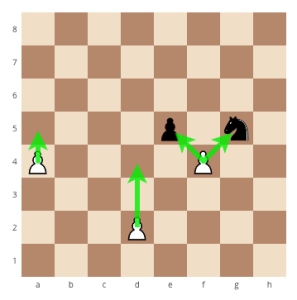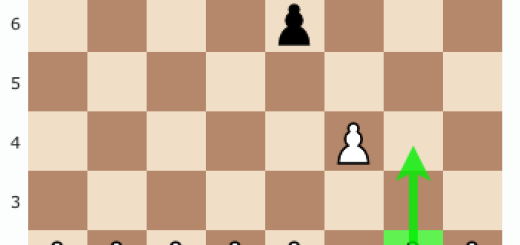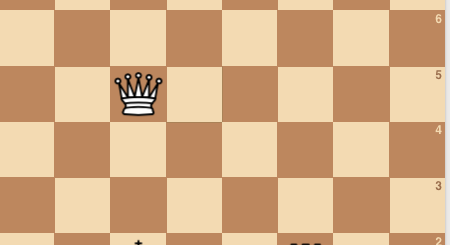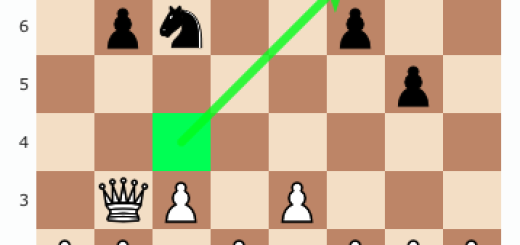How to Move the Pawn in Chess
Chess for Beginners
How to Move the Pieces in Chess:
How to Move the Pawn in Chess
When it comes to how to move the pawns in chess, it goes back to the origins of pawns.
In older times, the “pawns” (or laborer’s) made up the majority of people. This is why they are the most numerous chess piece in the game. In the game of chess, pawns are likened to foot soldier’s. Often they must be lost to protect the more valuable pieces, but when used correctly, pawns can be incredibly valuable.
Pawns can be used to press the attack, inflict critical losses, and even trap the King into checkmate! Most importantly, if a pawn reaches the other side of the board, he can be promoted to a higher level piece. This can make pawn’s a very valuable piece in the game of chess.
How to Move a Pawn in Chess
Imagine the pawn as a real life soldier. This solider travels on foot, carries a long spear, and has a shield for protection. How fast and effectively do you imagine this piece to move? Not very fast. He would get exhausted very quickly.
For this reason, the pawn can only move forward up to on space. Secondly, with a large shield in front of him, it would make it difficult for the pawn to attack directly ahead. For this reason, the pawn can only attack to the side, as you will read more about below. Here is an overview of how the pawn moves.
How To Move The Pawn In Chess
- The pawn moves forward, one square at a time.
- Unlike all the other pieces, the pawn can not move backward or sideways.
- Pawns can capture pieces only on a forward diagonal square, as seen in photo below.
- Having taken the enemies square, the pawn can now only continue to move forward one space at a time.
- On the first move only, the pawn can either be moved forward one square forward to two squares forward.
- If there is another piece in front of the pawn, the pawn is stuck, unless there is a piece ahead on the diagonal which the pawn can attack.
Below is an example of how the pawns back each other up. 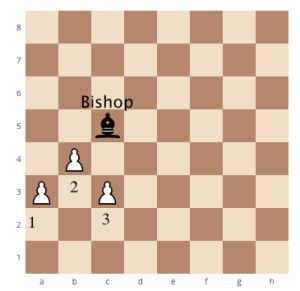
As you can see, if pawn 2 was attacked by the Bishop (who also attacks diagonally), pawn 1 or 3 could then attack the Bishop, and take the position pawn 2 previously held.
This would also result in exchanging a bishop for a pawn, an exchange that would work in light’s favor. (*The pawn attacks in a different direction than he moves*)
The En Passant Capture
While we covered the En Passant capture in more detail here, we’ll cover it briefly. The En Passant capture is when a pawn moves 2 spaces on its first move, and moves next to an opposing pawn. The opposing pawn can capture the pawn on the next move, as if the pawn only moved one space forward. 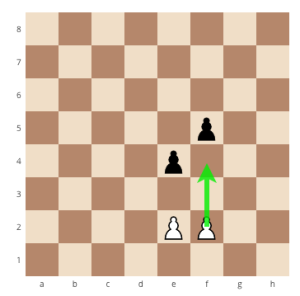
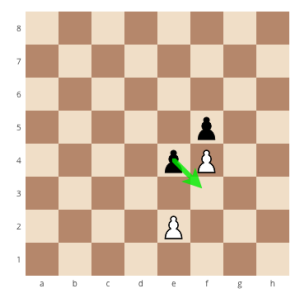
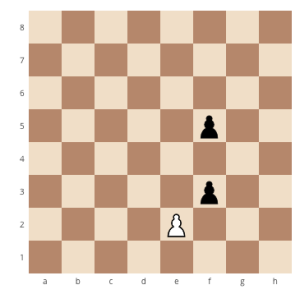
Notes about the Pawn & How to Move the Pawns in Chess
- The Pawn may not appear very powerful at first, but Pawns can be incredibly important near the end of the game. If he can make his way toward the other end of the board, he can be promoted to any other piece, even a Queen (but of course, not a King.) The Pawn is the only chess piece that can be promoted to a higher piece in the game. This alone makes Pawns an incredibly valuable piece in the game of chess.
- Pawns can make excellent shields men and protect both themselves and other higher value pieces. Similar to how the Spartan warriors fought side by side, and protected the man to the side of them. Pawns too can be set up in a similar formation, as seen below.
- The pawn has a value of “1”.
Final Notes About the Pawn
While the pawn may seem like a meaningless piece, always be sure to have at least a few to spare near the end of the game. These pieces may be critical in gaining a Queen, protecting higher value pieces, or even capturing the King!
Next:
Learn How To Move The Rook In Chess


